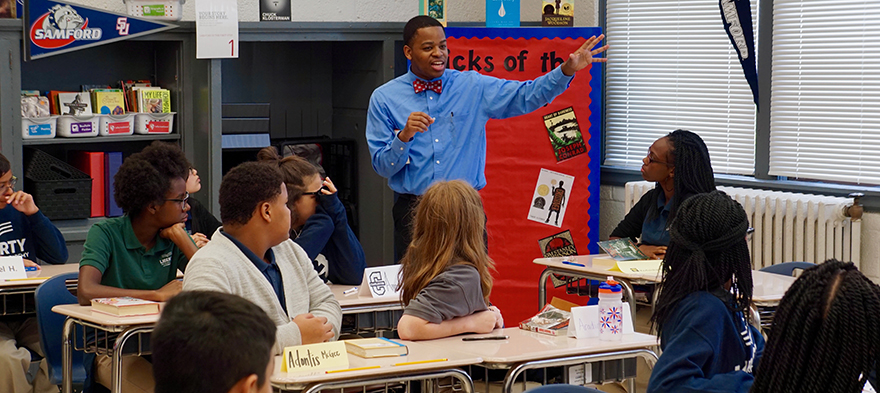
Dec 21, 2016 12:00:00 AM
by Aaron Talley
Aaron Talley is a writer, activist and educator who currently teaches middle school language arts on the South Side of Chicago. He is also an active member of Educators for Excellence-Chicago. His work lies at the intersections of race, gender, sexuality and education. Prior to teaching, he served as membership co-chair of the Black Youth Project 100, a youth-led direct action organization, as well as working with various community partners in urban youth leadership development. His writing has been featured in Colorlines, Mused Magazine Online, the Feminist Wire, TruthOut.com, the Advocate, and the Black Youth Project. He is passionate about using the critical lens of identity to inform how we not only support students, but teachers as well. He is a graduate of the University of Chicago where he received both a B.A. in English as well as his M.A in teaching from the university's urban teaching education program. He is originally from Detroit, Michigan.
The story you tell yourself about your own math ability tends to become true. This isn’t some Oprah aphorism about attracting what you want from the universe. Well, I guess it kind of is, but...
If you have a child with disabilities, you’re not alone: According to the latest data, over 7 million American schoolchildren — 14% of all students ages 3-21 — are classified as eligible for special...
The fight for educational equity has never been just about schools. The real North Star for this work is providing opportunities for each child to thrive into adulthood. This means that our advocacy...
Your donations support the voices who challenge decision makers to provide the learning opportunities all children need to thrive.
Ed Post is the flagship website platform of brightbeam, a 501(c3) network of education activists and influencers demanding a better education and a brighter future for every child.
© 2020–2024 brightbeam. All rights reserved.
Leave a Comment